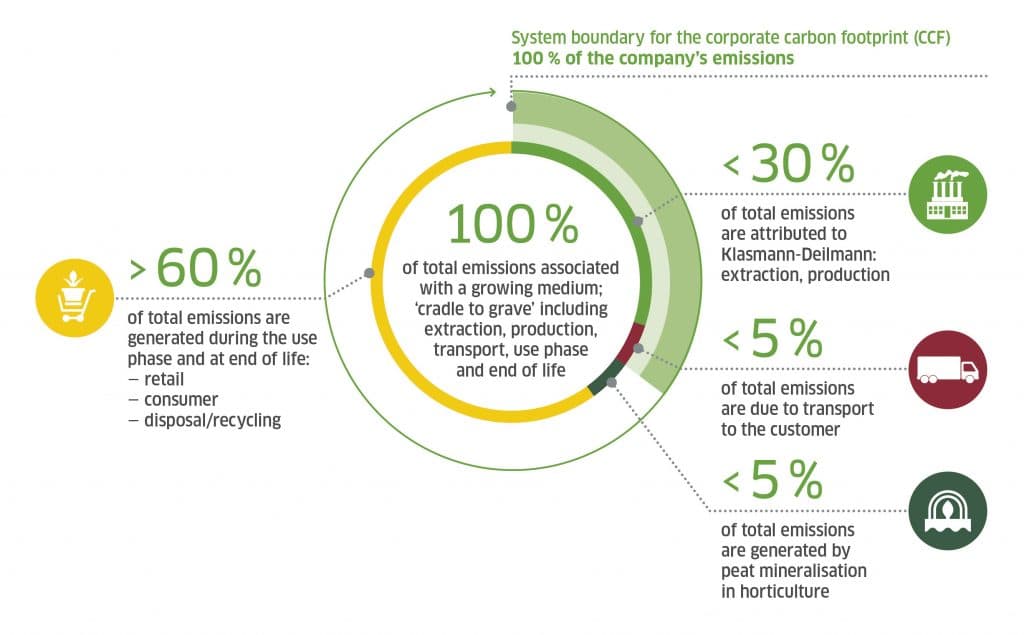Cradle to gate – cradle to grave
Product Carbon Footprint
Klasmann-Deilmann has already published its “Corporate Carbon Footprint” (CCF) three times, in which it reports the emissions generated by the Klasmann-Deilmann Group as a whole. The company also reports the carbon emissions of selected individual products in its “Product Carbon Footprint” (PCF).
When reporting the figures for 2015, the PCF was calculated within two different “system boundaries” for the first time: taking into account all factors which are relevant for climate change, we now calculate the carbon footprint for the individual growing medium from cradle to gate, i.e. from extraction of the raw material to the factory gate, and also from cradle to grave, i.e. from extraction of the raw material until complete decomposition of the substrate.
The differences between the two models are as follows:
Cradle to gate
This model records all emissions which are generated
- during the extraction or production of raw materials and
- during processing into the finished growing medium
and which are thus generated directly at our company or within our own system boundaries.
In terms of simplified weighting as a percentage, the carbon content that occurs during these two phases is equivalent to less than thirty per cent of the total carbon footprint throughout the substrate’s product life cycle.
Cradle to grave
In addition to the two phases stated above, this model also takes into account the carbon emissions generated during the phase in which the substrate is used and in the end-of-life phase. Accounting for a rough total of just over seventy percent, these emissions are generating during
- transport
- further use by the horticultural company
- sale by the wholesale and retail trade
- use by the consumer and
- recycling or alternatively
- waste disposal
of a substrate.
When broken down according to the above phases, a large part of the emissions in this model occur outside our system boundaries. We believe it is our responsibility to continue the policy we have already initiated and increasingly gear our substrate assortment to ensuring that fewer greenhouse gases occur at each point of the value and consumption chain. This is why we have made specific measures to achieve these goals an integral part of our corporate strategy, such as raising the share of alternative raw materials in our substrate mixes to 15 per cent by volume of our total annual production by 2020.
